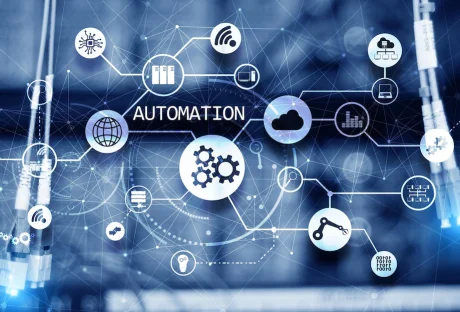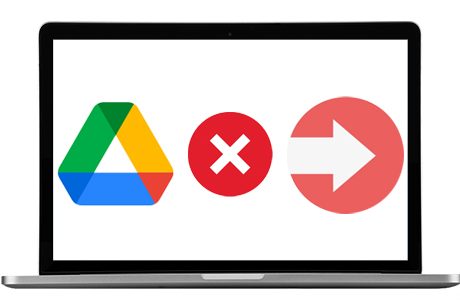In the fast-paced world of modern recruiting, staying competitive and efficient is crucial. As technology continues to evolve, traditional recruitment methods are being replaced by more advanced solutions. One such solution gaining popularity is cloud recruitment software. In this article, we will explore the benefits of transitioning to cloud recruitment software and discuss the considerations that recruiters must keep in mind during the process.
What Is Cloud Recruitment Software?

Cloud recruitment software, also known as applicant tracking systems (ATS), is a SaaS-based solution that enables organizations to streamline their recruitment process by managing candidates, job openings, and hiring workflows in a centralized, online platform. This software eliminates the need for manual data entry, provides real-time updates, and facilitates collaboration among team members.
The ATS is a particular type of onboarding software. It is available as on-premise systems and cloud-based software. Any application tracking system takes time to deploy (irrespective of the models). Ultimately, the process becomes quite efficient and fast, and experts opine that it saves time for every hire.
However, the cloud-based application tracking system gives a major advantage compared to the on-premise recruitment software.
Benefits Of Cloud Recruitment Software
Cloud recruitment software has evolved as one of the most suitable recruitment techniques compared to existing systems. The following section discusses some of the core advantages of cloud software.
1. Enhanced Accessibility And Collaboration
Cloud recruitment software breaks down geographical barriers and allows recruiters to access the platform from anywhere with an internet connection. This increased accessibility leads to better collaboration among hiring teams, ensuring that everyone stays on the same page throughout the hiring process.
2. Improved Candidate Sourcing And Management
With cloud recruitment software, recruiters can easily source candidates from various channels, such as job boards, social media, and employee referrals. The software’s candidate relationship management systems help in building and nurturing relationships with potential candidates, ensuring a robust talent pool for future requirements.
3. Time And Cost Savings
Automating repetitive tasks and streamlining the recruitment process results in significant time and cost savings. Cloud recruitment software reduces manual paperwork, shortens the time to fill positions, and optimizes the hiring budget.
4. Data-Driven Decision Making
The software provides in-depth analytics and reporting features that enable data-driven decision-making. Recruiters can track key metrics, such as time-to-hire, cost-per-hire, and source of hire, to assess the effectiveness of their recruitment strategies and make necessary improvements.
5. Scalability And Flexibility
Cloud recruitment software is designed to accommodate businesses of all sizes, from startups to large enterprises. Its scalable nature ensures that it can grow alongside the organization’s needs. Additionally, the software’s flexibility allows for customization to align with specific recruitment workflows.
6. Quick To Deploy
The cloud-based software deployment can be done within days or weeks compared to the existing or, say, the premise-based hiring system. The entire deployment of the system includes creating user accounts, migrating the data, and then customizing the features and tools. Also, many cloud-based systems are armed with chatbots and training elements that enhance the knowledge base of the seeker.
The particular resources are much more effective in providing the training. But in contrast to it, the premise-based software takes months to integrate into the system.
7. Technical Support
Technical support is included in the premium services of the SaaS recruitment system. The best cloud recruitment software is integrated with the technical prowess to cater to the needs of the stakeholders. When you compared it with the existing software, it required a full in-house team to maintain data security. A full-fledged IT team was also required for the software update and security of data.
8. Security
With the help of the on-premise hiring software, you can not mingle between security and control. The HR recruitment software, if powered by the cloud-based vendor, offers a far more secure system compared to the existing technology. Cloud-based technology is quite safe, and bulk data management is quite easy. You do not have to hire local servers to safeguard your data.
9. Integration
The best recruitment software integrates with that of the recruitment tool. Some examples of IT include job board applications and onboarding software. The HR tech integration integration has traversed huge distances. Thus, hiring the tools integrated with the voluminous HR system.
10. Access To Mobile Phones
There is nothing better than mobile phone compatibility. The same is considered for the cloud recruitment software. With systems integrated with mobile phones, you can allow your recruitment HR professionals to work from home. It is, therefore, a major advantage compared to what was used previously.
Besides this, the cloud-based recruitment software enhances the experience as they always seek an easy-to-use system. This is why companies are slowly thinking of shifting from legacy software to that of the cloud system.
Considerations For Transitioning To Cloud Recruitment Software
Are you looking to transition from on-premise hiring to cloud recruitment software? Then, in that case, you will have to keep certain considerations in mind.
1. Data Security And Compliance

As recruiters handle sensitive candidate information, data security should be a top priority. When transitioning to cloud recruitment software, ensure that the provider adheres to industry-leading security standards and compliance regulations.
2. Integration With Existing Systems
Before making the switch, consider the compatibility of the new software with your existing HR or CRM systems. Seamless integration ensures smooth data flow and avoids duplication of efforts.
3. User-Friendly Interface And Training
Choose a cloud recruitment software with an intuitive user interface that is easy to navigate. Proper training and onboarding for the recruitment team will accelerate the adoption of the new system.
4. Vendor Support And Upgrades
Select a reputable vendor that offers reliable customer support and regular software upgrades. This ensures that your recruitment software remains up-to-date with the latest features and security patches.
Final Thoughts
Transitioning to cloud recruitment software can revolutionize your hiring process and bring unparalleled efficiency to your recruitment efforts. Embracing this technology allows you to stay ahead of the competition in the ever-evolving talent landscape. Remember to consider data security, integration, user-friendliness, and vendor support when making the switch.
Read Also:






















